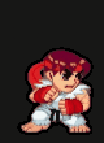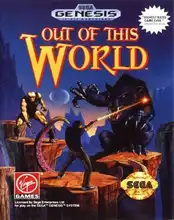Remember the tension? That feeling in your gut as your character, painstakingly animated pixel by pixel, clung to a ledge or faced down an impossible jump? That wasn't just any platformer; that was the magic of the Cinematic Platformer.
This often-overlooked corner of the retro gaming world delivered experiences unlike anything else. Forget twitch reflexes and endless lives; these games demanded patience, observation, and a willingness to learn through (often brutal) failure. They traded arcade action for atmosphere, focusing on realistic movement, environmental puzzles, and narratives woven directly into the gameplay.
Let's take a trip back and explore what made the Cinematic Platformer genre so special, and why these pixelated dramas are still worth revisiting today.
What Exactly IS a Cinematic Platformer?
Unlike typical platformers where characters jump like kangaroos and shrug off falls, the Cinematic Platformer genre is defined by a few key characteristics:
- Realistic Movement: Characters often move with a sense of weight and inertia. Jumps require careful timing and distance calculation. Actions like climbing, running, and stopping feel grounded, often thanks to techniques like rotoscoped animation (tracing live-action footage).
- Consequences: Expect harsh penalties for mistakes. Falling from too high means instant death. Running into a trap without thinking is game over. This trial-and-error loop is central to the challenge.
- Focus on Atmosphere & Story: These games prioritize creating an immersive world. Minimal UI, environmental storytelling, and often wordless narratives pull you in. The focus is less on high scores and more on survival and unraveling the plot.
- Environmental Puzzles: Progress often relies on interacting with the environment, using switches, manipulating objects, or figuring out how to safely navigate deadly obstacles, rather than just pure jumping skill.
It's a genre that asks you to slow down, observe, and think before you act. And yes, it can be incredibly frustrating, but that's part of the charm (or trauma!) for many retro fans.
The Pioneers: Where the Drama Began
The roots of the Cinematic Platformer stretch back to the late 1980s, laying the groundwork for everything that followed.
Prince of Persia (1989)
Considered the granddaddy of the genre, Jordan Mechner's masterpiece set the standard with its incredibly fluid, rotoscoped animation and brutal, timed challenge. Escaping that dungeon within 60 minutes felt like a real race against the clock, every sword fight and precarious jump a tense moment. It wasn't just a game; it felt like controlling a character in a swashbuckling movie. Finding this gem today is easier than escaping Jaffar's prison thanks to platforms like GOG.com.
Another World / Out of This World (1991)
Eric Chahi's surreal sci-fi adventure is a masterclass in atmosphere and minimalist storytelling. With virtually no dialogue, it tells the gripping tale of a young physicist stranded on a hostile alien planet. The game relied on visual cues and character interaction (especially with your alien companion, often nicknamed "Buddy") to drive the narrative. Its distinctive vector graphics and cinematic cutscenes were groundbreaking.
Flashback: The Quest for Identity (1992)
Building on the foundations laid by its predecessors, Flashback offered a more action-oriented take while retaining the genre's core elements. With stunning rotoscoped animation and a compelling amnesiac protagonist story, it felt like playing through a sci-fi action film. The blend of exploration, puzzle-solving, and cover-based gunplay made it a huge hit. Just... maybe avoid the 2013 remake if you're chasing that pure retro feel.
Beyond the Early Days: More Genre Gems
The early 90s saw the genre flourish, with developers putting their own spin on the formula.
- Blackthorne (1994): Blizzard (yes, that Blizzard) delivered a darker, more action-packed entry starring a shotgun-wielding hero. Its cover system was ahead of its time, and the gritty fantasy setting felt epic. The Sega 32X version is often cited as a standout.
- Oddworld: Abe's Oddysee / Exodus (1997/1998): The Oddworld games brought complex characters, dark humor, and unique "Gamespeak" mechanics to the genre. Saving the Mudokons required clever use of Abe's abilities, environmental interaction, and guiding hapless followers. The quicksave feature in Exodus was a welcome relief from the trial-and-error of the original!
- Heart of Darkness (1998): Another beautiful game from Eric Chahi, this one felt like an animated movie come to life, albeit one with frequent, often surprising deaths. Playing as young Andy rescuing his dog from shadowy monsters on a bizarre alien world was visually stunning, even if the puzzles could be head-scratchingly difficult.
These games, and others like OnEscapee, S.O.S., and the later Dark Castle titles, solidified the Cinematic Platformer as a distinct and memorable genre. Playing them often involved poring over manuals for clues, sharing tips with friends, and celebrating small victories after countless frustrating deaths.
Why We Love (and Sometimes Hate) Them
So, why do these games stick with us?
- Immersion: The focus on atmosphere and story, combined with realistic movement, drew you deeply into their worlds.
- Unique Challenge: The blend of platforming, puzzles, and consequences offered a different kind of mental test than typical action games.
- Unforgettable Moments: Surviving a near-impossible trap, finally figuring out a tricky puzzle, or witnessing a particularly brutal death (morbid, maybe, but they were often surprising!) are burned into our memories.
On the flip side, the trial-and-error gameplay could be infuriating. Dying repeatedly to the same trap until you memorized the exact timing wasn't for everyone. But for those who persevered, the rewards were immense.
The Legacy Lives On
While the classic era of the Cinematic Platformer might be tied to the 80s and 90s, its influence persists. Modern games like Limbo, Inside, and Planet of Lana carry the torch, emphasizing atmosphere, environmental puzzles, and often minimalist narratives, proving that the core concepts of the genre still resonate with players today.
Revisiting these old gems, whether through digital storefronts like GOG or via emulators like DOSBox for PC classics, is a wonderful way to connect with a unique period in gaming history. They stand as a testament to the power of atmosphere, animation, and challenging design to create truly memorable experiences.
Frequently Asked Questions
What are the defining features of a Cinematic Platformer?
Cinematic Platformers are known for realistic character movement and physics, a strong focus on atmosphere and story over pure action, environmental puzzles, and often a trial-and-error gameplay loop with harsh consequences for mistakes (like instant death).
Why are Cinematic Platformers often considered difficult?
Their difficulty often stems from the trial-and-error nature. Players must learn through repeated failure how to navigate obstacles, time jumps precisely, and avoid instant-death traps. Realistic movement also means less forgiveness for imprecise control compared to typical platformers.
What are some classic examples of the genre?
Key classic Cinematic Platformers include Prince of Persia (1989), Another World (also known as Out of This World), Flashback, Blackthorne, and games from the Oddworld series like Abe's Oddysee.
Are there modern games that are considered Cinematic Platformers?
Yes, the genre's influence continues. Modern examples like Limbo, Inside, and Planet of Lana capture the spirit with their focus on atmosphere, environmental puzzles, and integrated storytelling, though they may evolve certain mechanics.
So there you have it – a look back at the Cinematic Platformer, a genre that proved you didn't need complex controls or constant action to create gripping, memorable, and yes, sometimes frustrating, gaming experiences. What were your favorites from back in the day?


